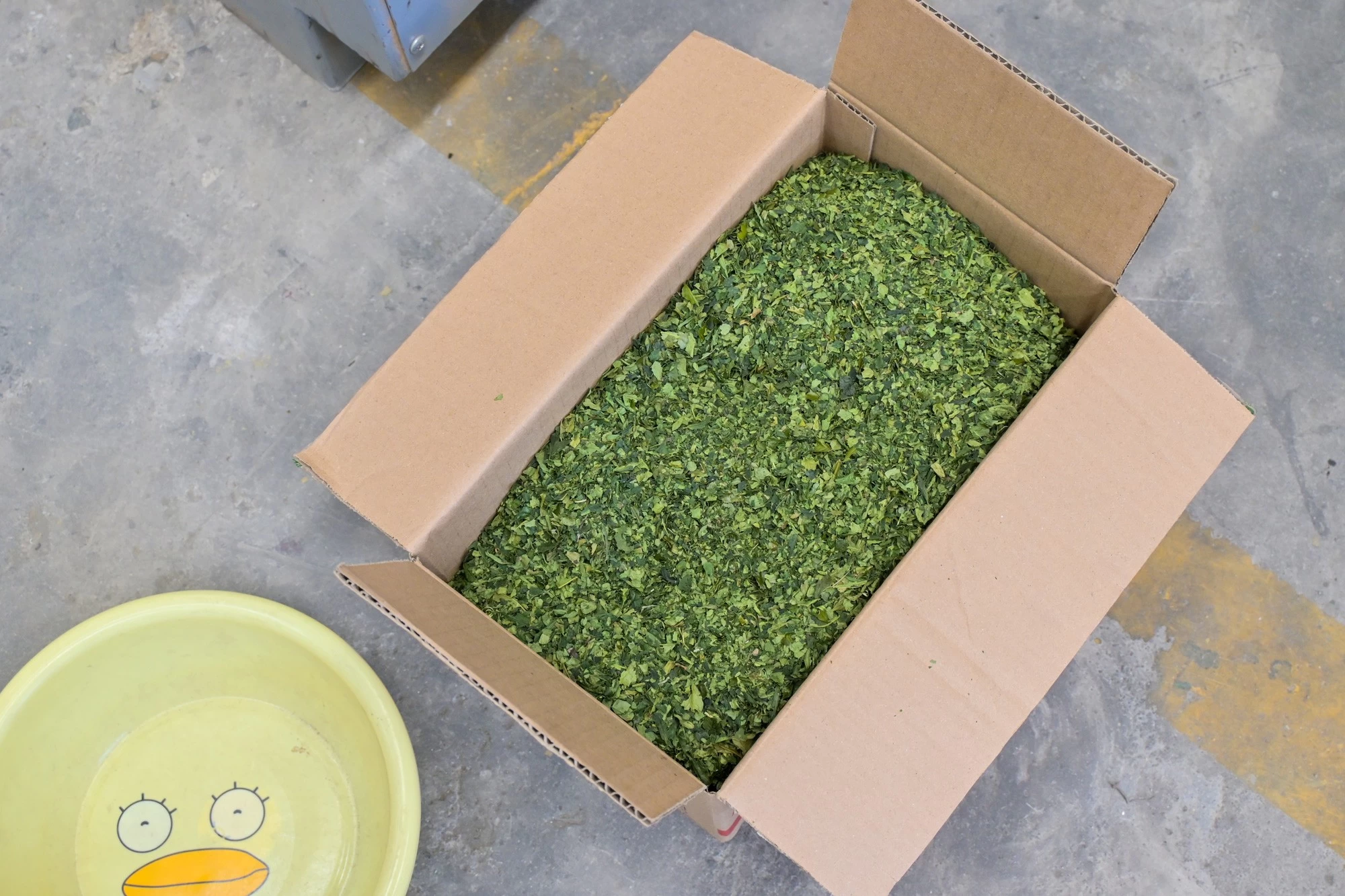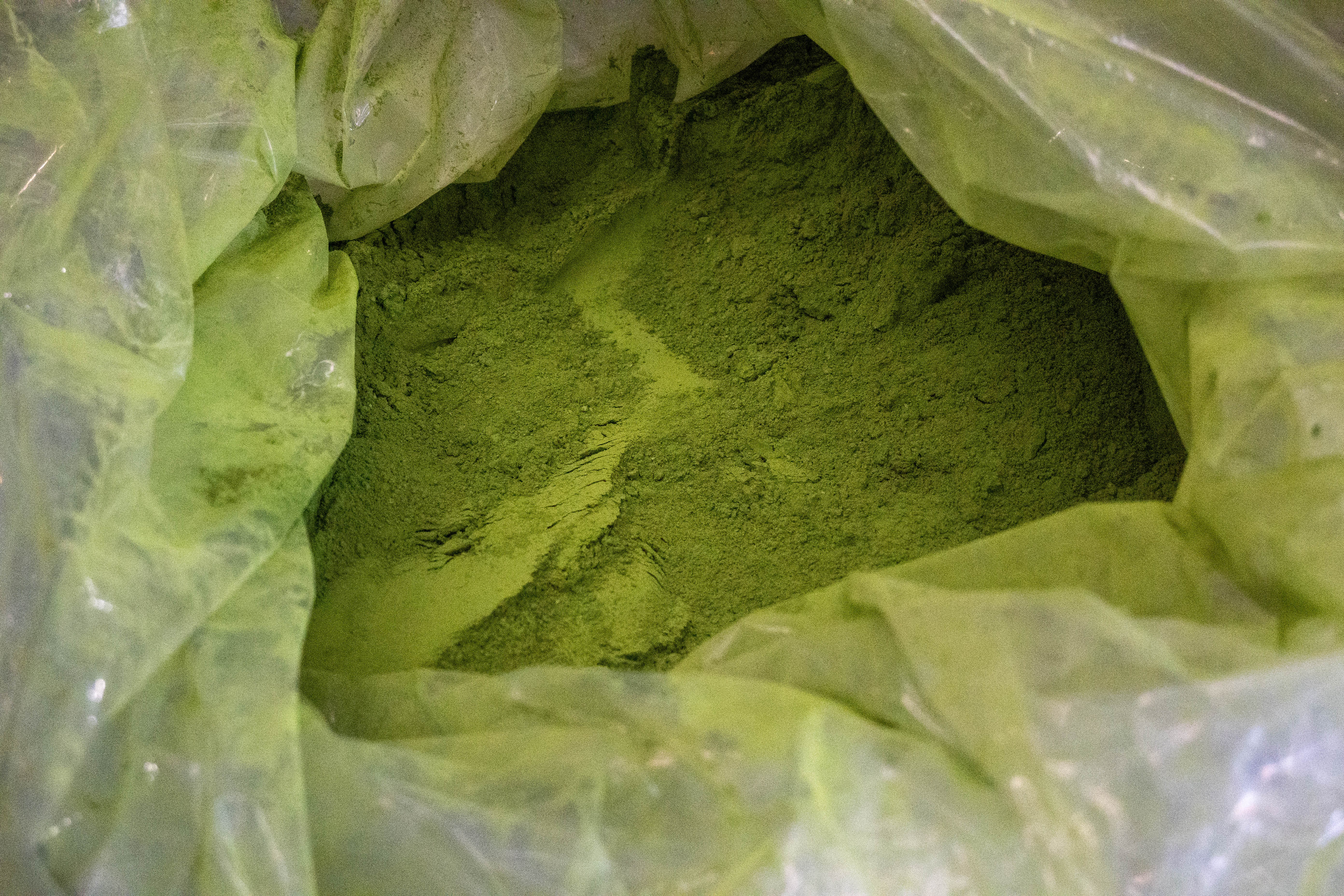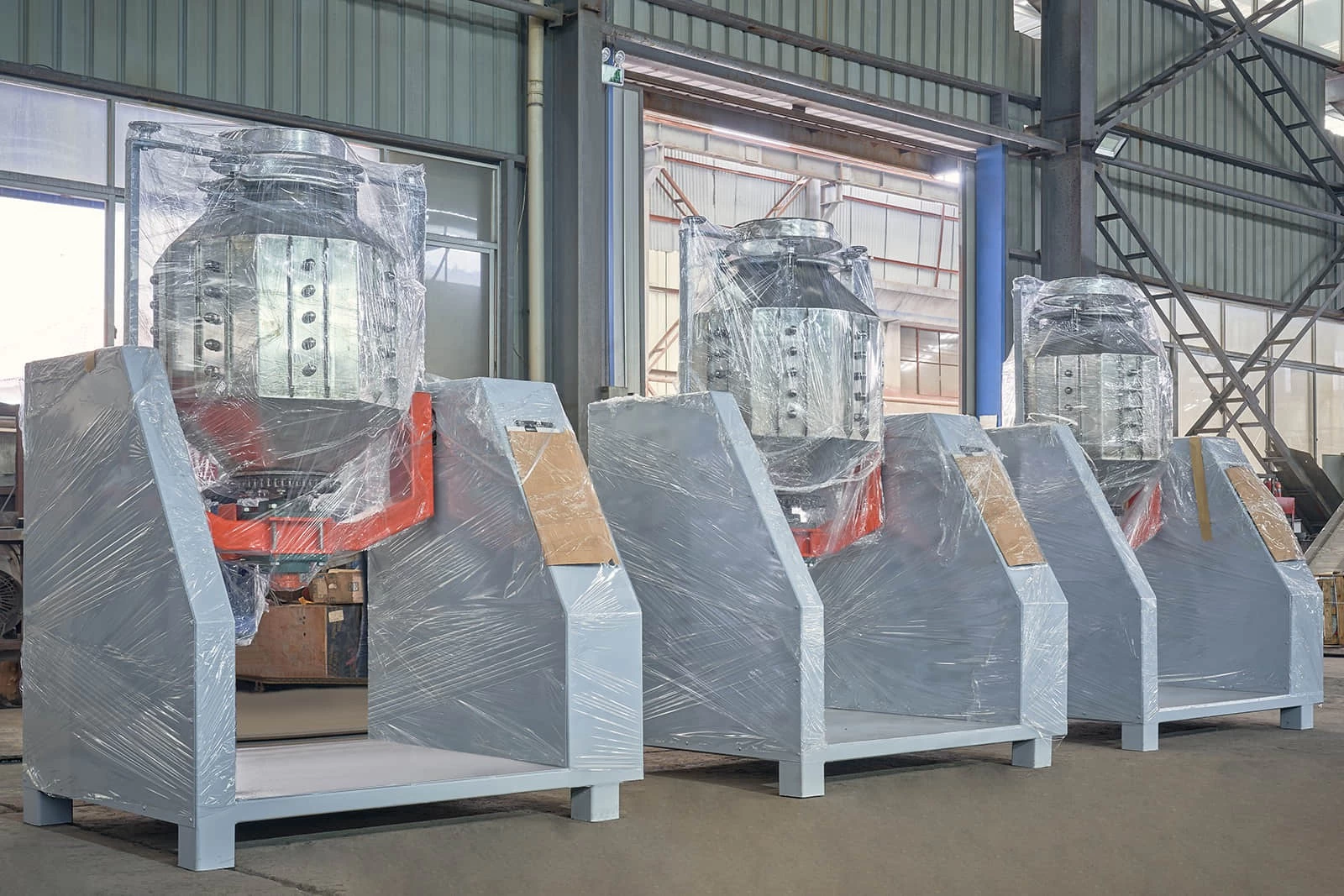The Matcha ball mill is designed for post-drying grinding of agricultural products (e.g., ground tea, Chinese medicinal materials) with advantages of low-temperature grinding (5-15℃) to retain raw material color and aroma, fine fineness (500-1000 meshes), PLC-controlled easy operation, and durable structure.
The Matcha ball mill is designed for post-drying grinding of agricultural products (e.g., ground tea, Chinese medicinal materials) with advantages of low-temperature grinding (5-15℃) to retain raw material color and aroma, fine fineness (500-1000 meshes), PLC-controlled easy operation, and durable structure.
Single Semi-automatic Tea Pressing Machine, working with a small granular filling machine, enables quantitative filling and efficient pressing. Powered by 220V and 4.0KW, it produces 500 pieces per hour, supporting round tea cakes (20.0-35.0mm) and dragon ball-shaped teas (20.0-27.0mm). User-friendly and safe, it’s ideal for processing Pu-erh, white, and dark compressed teas.
Discover the LS3CX - 750 High Efficiency Wheel Trimmer, your ultimate solution for pruning in gardens, along roads, and in tea gardens. This trimmer comes with an adjustable height function, enabling you to adapt to different plant heights. Its high - performance cutting system ensures efficient and clean cuts on grass, shrubs, and tea branches. With a user - friendly wheel - based design, it offers easy maneuverability, making pruning tasks a breeze. Ideal for both professional landscapers and gardening enthusiasts.
4C-60L is a handheld automatic tea plucking machine designed for tea gardens. Equipped with a 2-stroke gasoline engine and a 600mm reciprocating cutter head, it efficiently harvests tea leaves with precision. Weighing only 10-14.3kg and featuring a backpack design, it ensures flexible and lightweight operation for prolonged use.
The 0.7L fuel tank supports hours of continuous work, while the centrifugal friction clutch transmission system delivers stable power and easy maintenance. Its comb-type cutting technology separates buds and leaves accurately, minimizing damage, and the negative-pressure suction tube directly collects fresh leaves into a waist-mounted bag, integrating "picking-collection" into one process
The 20 "" 58 cc chainsaw bar with GN5800 petrol chainsaw machine is a high performance cutting tool designed for various applications. It has a two -act fuel engine with 58 cm3, offering a robust power for an effective cut. The length of the 20 -inch bar, associated with an appropriate chain, allows a smooth and effective cut through thick branches, logs and other wooden materials.
The automatic automatic packaging machine for packaging and sealing of plastic movies is a very effective packaging equipment designed to meet the various packaging needs of various industries. He uses a plastic film to closely pack the products, then applies heat to shrink the film, thus guaranteeing a safe and aesthetic packaging.
The 24V Cordless Electric Mini Portable Tea Harvesting Machine, model 4C - 35, is a highly efficient and convenient tool designed for tea picking. With dimensions of 520180190 mm, it offers a compact and portable design, making it easy to carry and operate in tea gardens. Powered by a voltage range of 16V - 31V and equipped with two 18V5Ah batteries, this machine ensures stable and continuous performance. It features a high revolution speed of 10500r/min and a revolution ratio of 4.3:1, enabling efficient cutting. The 350 mm blade length is ideal for effective tea leaf harvesting. Weighing only 1.1 kg, with a gross weight of ≤5.5kg, it is lightweight, reducing operator fatigue and enhancing productivity during tea picking tasks.
Matcha, a fine powder made from specially grown and processed green tea leaves, has captivated global taste buds with its unique flavor, vibrant color, and rich nutrients. Unlike regular green tea, where you steep leaves and discard them, matcha lets you consume the entire leaf—unlocking all its goodness. This blog will take you through matcha’s basics, from its raw materials and ancient history to modern production methods, nutritional benefits, new derivative drinks, and introduce our factory’s high-quality matcha-making equipment.
Matcha is a type of powdered green tea originating from Japan. It is produced by shading tea plants (Camellia sinensis) for 20-30 days before harvest to increase chlorophyll and amino acid content, then steaming, drying, removing stems and veins, and finally grinding the leaves into an ultra-fine powder. Its distinct characteristics—bright color, umami flavor, and concentrated nutrients—make it a staple in traditional tea ceremonies and a popular ingredient in modern food and drinks.

The quality of matcha starts with its raw materials—high-quality tea leaves from specific varieties of Camellia sinensis, mainly:
The traditional matcha production process is meticulous and can be divided into 5 key steps:

Matcha is a nutrient-dense superfood, with benefits backed by modern nutrition science:
The grinding step defines matcha’s quality, and methods have evolved to balance tradition, efficiency, and precision:
| Era | Grinding Method | Key Features | Limitations |
|---|---|---|---|
| Ancient Times | Manual Stone Mills (e.g., granite) | Traditional, low heat (preserves nutrients), simple structure | Slow speed, low output, inconsistent powder size |
| Modern Traditional | Electric Stone Mills (granite/black gold stone) | Automated, better heat control, retains traditional flavor | Still lower output than industrial machines; black gold stone mills have ultra-low capacity |
| Industrial Age | Ball Mills (ultra-hard alumina balls) | High efficiency, sealed environment (low microbes), ultra-fine powder (<15μm) | Requires temperature control; slightly reduces chlorophyll (minimal impact on overall quality) |
Over time, matcha quality has been enhanced through 3 core aspects:
Matcha’s versatility has led to a wave of innovative drinks worldwide:

To produce high-quality, industrial-grade matcha powder (≤15μm), our factory’s DL-6CQM-40 Ultra-Hard Alumina Ball Mill is the ideal choice. It combines efficiency, precision, and hygiene to meet large-scale production needs.
| Parameter | Specification |
|---|---|
| Dimension | 1500×1190×1760mm |
| Voltage | 380V 50/60Hz |
| Power | 1.75 KW |
| Drum Diameter | Φ65 |
| Drum Speed | 0-38 rpm |
| Milling Ball Size | φ20 |
| Milling Ball Quantity | 90-100 |
| Working Temperature | 5-15 ℃ |
| Capacity | 25 kgs/batch |
| Milling Time | 10-20 hours |
| Matcha Size | ≤15μm |
| Efficiency | ≈1-2 kg/hour |
| Machine Weight | 360 kgs |
For more information about our matcha production equipment or to place an order, please reach out: